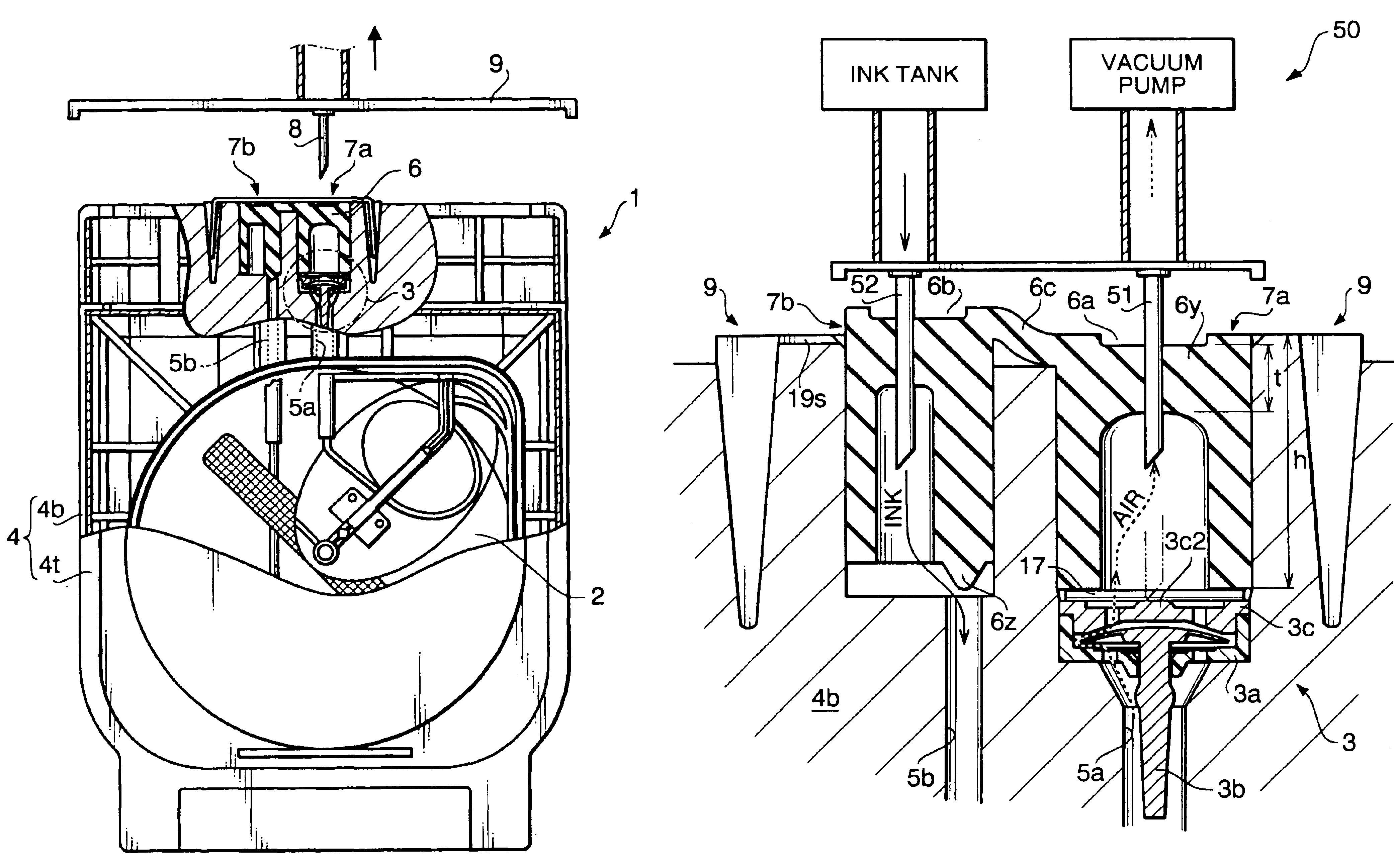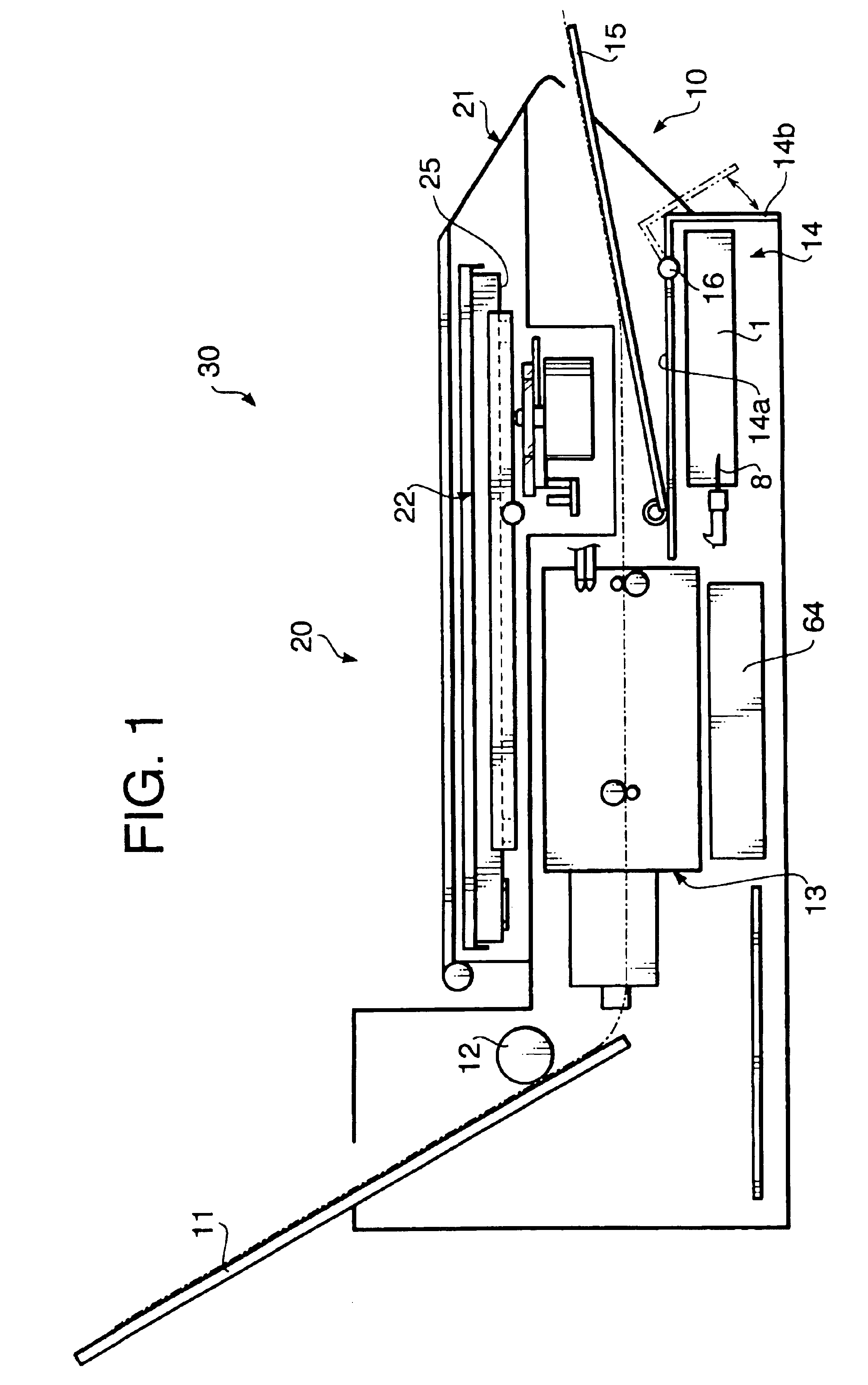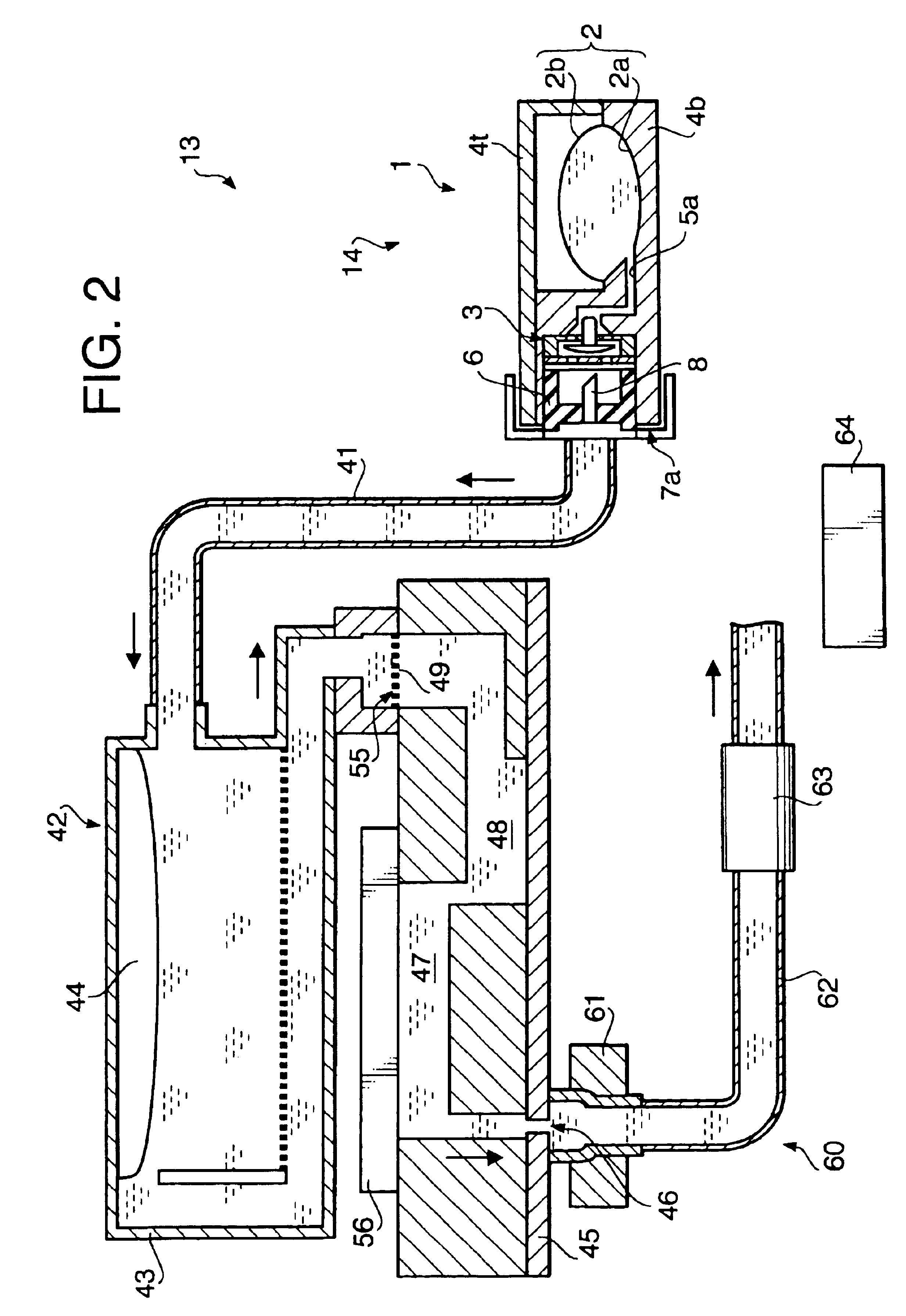Ink cartridge
- Summary
- Abstract
- Description
- Claims
- Application Information
AI Technical Summary
Benefits of technology
Problems solved by technology
Method used
Image
Examples
second embodiment
[0167
[0168]FIGS. 14A through 14D show a structure of the openings 7a and 7b, and the stops 6a and 6b, according to a second embodiment.
[0169]According to the second embodiment, as shown in FIG. 14A, the second stop 6b is provided with a protrusion 6z′ having a substantially cylindrical shape, which is different from the conical shape of the protrusion 6z shown in FIG. 8. Further, the protrusion 6z′ is provided at the central portion of the bottom surface of the second stop 6b. Corresponding to the location of the protrusion 6z′, the second path 5b communicates with the second opening 7b at the central portion of the bottom surface of the opening 7b.
[0170]FIG. 14B shows an ink filling operation according to the second embodiment. Similarly to the first embodiment, when the ink filling operation is performed, the second stop 6b is not completely inserted In the second opening 7b, and the protrusion 6z′ is spaced from the second path 5b so that the second path 5b communicates with the...
third embodiment
[0174
[0175]FIGS. 15A through 15D show a structure of the openings 7a and 7b, and the stops 6a and 6b, according to a second embodiment. The third embodiment is similar to the second embodiment except that an incision is formed on the protrusion 6z′ at its proximal end (i.e., the second stop 6b side end), and a curved second path 5b′ is provided instead of the straight second path 5b, as shown in FIG. 15A.
[0176]FIG. 15B shows an ink filling operation according to the third embodiment. Similarly to the first embodiment, when the ink filling operation is performed, the second stop 6b is not completely inserted in the second opening 7b, and the protrusion 6z′ is spaced from the second path 5b′ so that the second path 5b′ communicates with the second opening 7b. Therefore, the ink can be supplied from the second opening 7b to the ink reservoir 2 through the second path 5b′.
[0177]After the ink is filled, the second stop 6b is fully inserted in the second opening 7b as shown in FIGS. 15C ...
fourth embodiment
[0182
[0183]FIGS. 16A through 16D show a structure of the openings 7a and 7b, and the stops 6a and 6b, according to a fourth embodiment. According to the fourth embodiment, as shown in FIG. 16A, the second stop 6b is not provided with a protrusion, and a second path 5b″ is configured to communicate with the second opening 7b at the side surface thereof. The second path 5b″ has a curved shape and connects the second opening 7b and the ink reservoir 2. In the fourth embodiment, the side surface of the second stop 6b functions as a valve to close the second path 5b″.
[0184]FIG. 16B shows an ink filling operation according to the fourth embodiment. Similarly to the first embodiment, when the ink filling operation is performed, the second stop 6b is not completely inserted in the second opening 7b, and the second path 5b″ communicates with the second opening 7b. Therefore, the ink can be supplied from the second opening 7b to the ink reservoir 2 through the second path 5b″.
[0185]After th...
PUM
 Login to View More
Login to View More Abstract
Description
Claims
Application Information
 Login to View More
Login to View More - R&D
- Intellectual Property
- Life Sciences
- Materials
- Tech Scout
- Unparalleled Data Quality
- Higher Quality Content
- 60% Fewer Hallucinations
Browse by: Latest US Patents, China's latest patents, Technical Efficacy Thesaurus, Application Domain, Technology Topic, Popular Technical Reports.
© 2025 PatSnap. All rights reserved.Legal|Privacy policy|Modern Slavery Act Transparency Statement|Sitemap|About US| Contact US: help@patsnap.com



